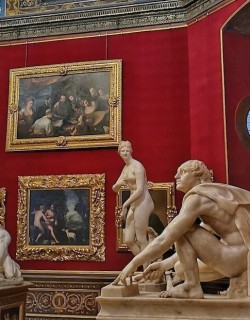Cradle of the Renaissance and spiritual home to art lovers everywhere, Florence is home to many of the finest masterpieces in the canon of western art. The city’s vast array of churches was frequently the evocative staging ground where the finest artists of their generation took up their brushes to decorate altars, chapels and funerary monuments for the wealthy patrons of the Renaissance who wished to leave their mark on history.
And although Florence’s museums like the Uffizi and Accademia house many of these works today, a number of them are still in situ; there is nothing quite like encountering masterpieces by artists of the calibre of Michelangelo, Donatello and Ghirlandaio still in the contexts where their first viewers saw them.
And that’s to say nothing of the architecture itself - the harmonious Renaissance visions of architects like Filippo Brunelleschi still condition our understanding of space even today.
This week on our blog we’re counting down 7 of our favourite churches in the city. Obviously, with so many stunning churches to choose from we’ve given ourselves an impossible task - let us know some of your favourite Florentine churches missing from our list!
The Duomo
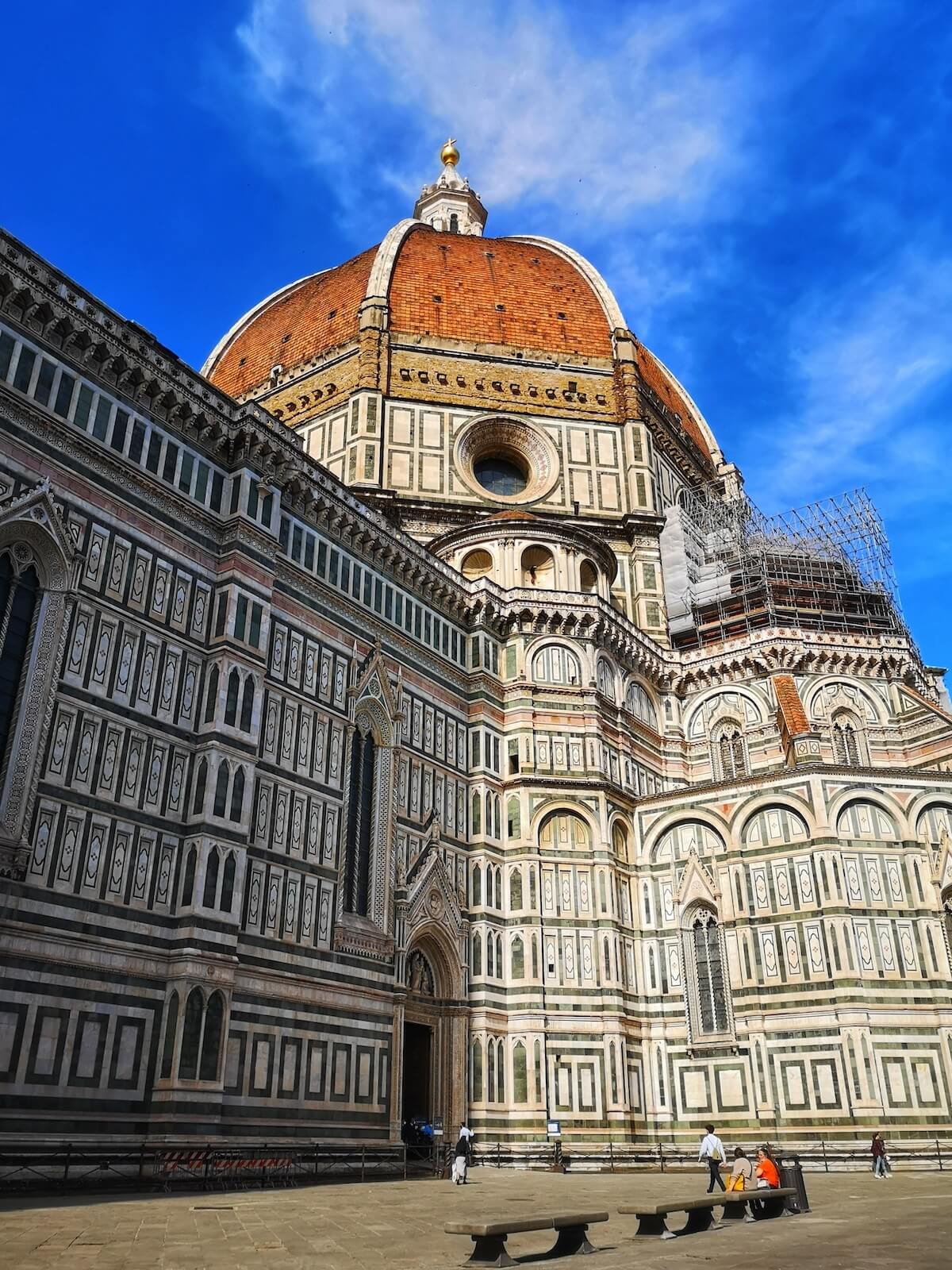
Nothing can prepare you for your first site of Florence’s jaw-dropping cathedral. The most iconic monument in the city for good reason, the Duomo’s staggeringly beautiful pink, white and green facade seems to dominate the horizon in all directions from a vantage point in Piazza del Duomo.
Work on the immense structure began under the auspices of Arnolfo di Cambio in 1296, and the extraordinarily ambitious undertaking would take a good 150 years to reach its conclusion, when it was finally garlanded with Brunelleschi’s otherworldly red-tiled dome - a landmark of Renaissance architecture and engineering.
The cathedral’s spare interior might be something of a disappointment after the bombastic exterior, with many of its artistic treasures removed to the nearby Museo dell’Opera del Duomo for safekeeping, but there is still plenty to keep you interested.
Look out in particular for Paolo Uccello’s funerary monument to English soldier-of-fortune Sir John Hawkwood, and Vasari’s dizzying portrayal of the Last Judgement snaking its way up the cathedral’s cupola. Finally, make sure to visit Giotto’s campanile to one side of the cathedral, where stunning views across the city amply repay the gruelling 414 step climb to the top.
Santa Croce
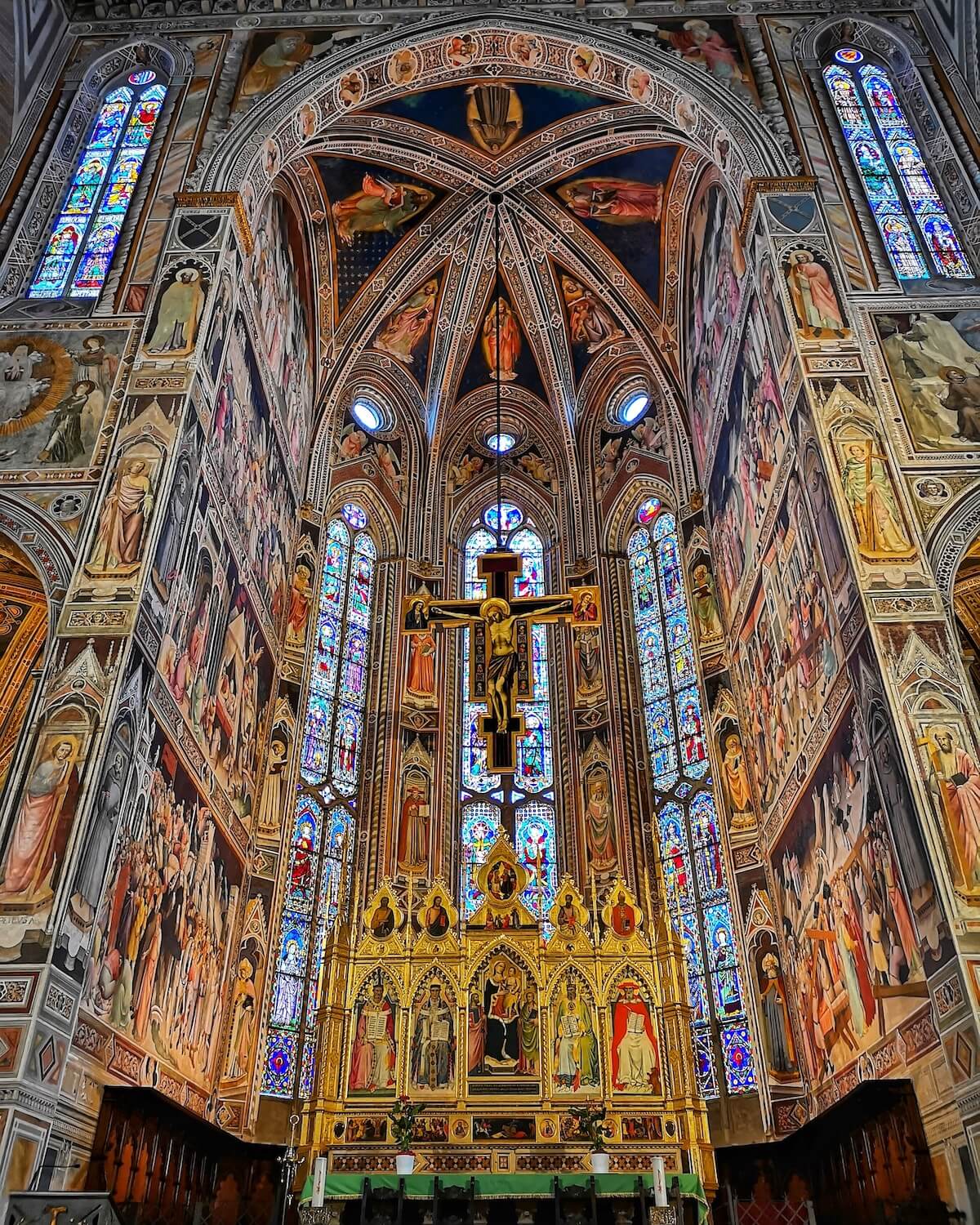
Looming over the sweeping piazza of the same name (where, if you’re lucky, you might see a no-holds barred game of Florentine calcio storico in full flow), massive Santa Croce is one of Florence's great monuments.
Designed for the Franciscan order by (you guessed it) Arnolfo di Cambio beginning in 1294, the basilica is named for a splinter of the Holy Cross donated by King Louis IX of France, and is the traditional burial place of the great and good in the city - including such luminaries as Michelangelo, Machiavelli and Galileo.
Extraordinary artistic masterpieces are everywhere you look, from Giotto's paintings in the Bardi and Peruzzi Chapels to Agnolo Gaddi's marvellous frescoes depicting The Legend of the True Cross behind the high altar as well as scenes from the Life of the Virgin in the Baroncelli chapel. The extraordinary harmony of Brunelleschi’s Pazzi chapel meanwhile will leave you breathless, one of the great high-points of Renaissance architecture.
San Lorenzo
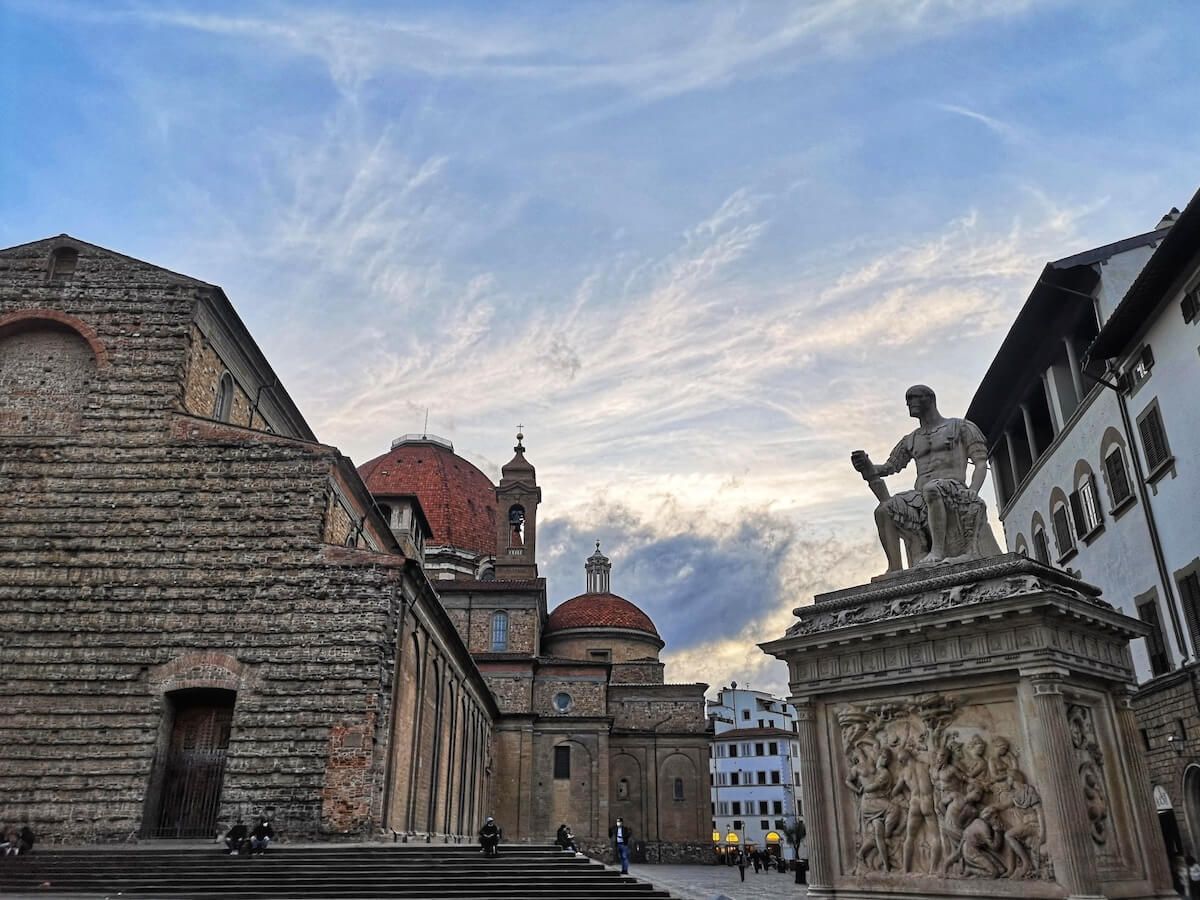
The starkly unfinished brick exterior of San Lorenzo can come as something of a shock for first-time visitors (Michelangelo’s plans for a fabulous facade in Carrara marble never came to pass), but don’t let that put you off. This Brunelleschi-designed basilica is a masterpiece of Renaissance design, and its status as the local church and final resting place of the all-powerful Medici ensures that a treasure-trove of fantastic artworks lie in wait within.
Look out for Donatello’s amazing bronze pulpits and Filippo Lippi’s beautiful Annunciation in the airy, harmonious interior.
Brunelleschi’s coolly rationalist Old Sacristy meanwhile is widely considered to be a harbinger of the ideals of Florentine Renaissance design that would come to dominate European conceptions of architecture for the next 500 years, and is home to a wonderful Crucifix and depiction of the astrological constellations by Donatello.
Whilst here, make sure to visit Michelangelo’s billowing staircase in the Laurentian library as well as the New Sacristy, where the master’s tombs of the Medici Dukes stand amongst the greatest sculptures of the Renaissance.
San Miniato al Monte
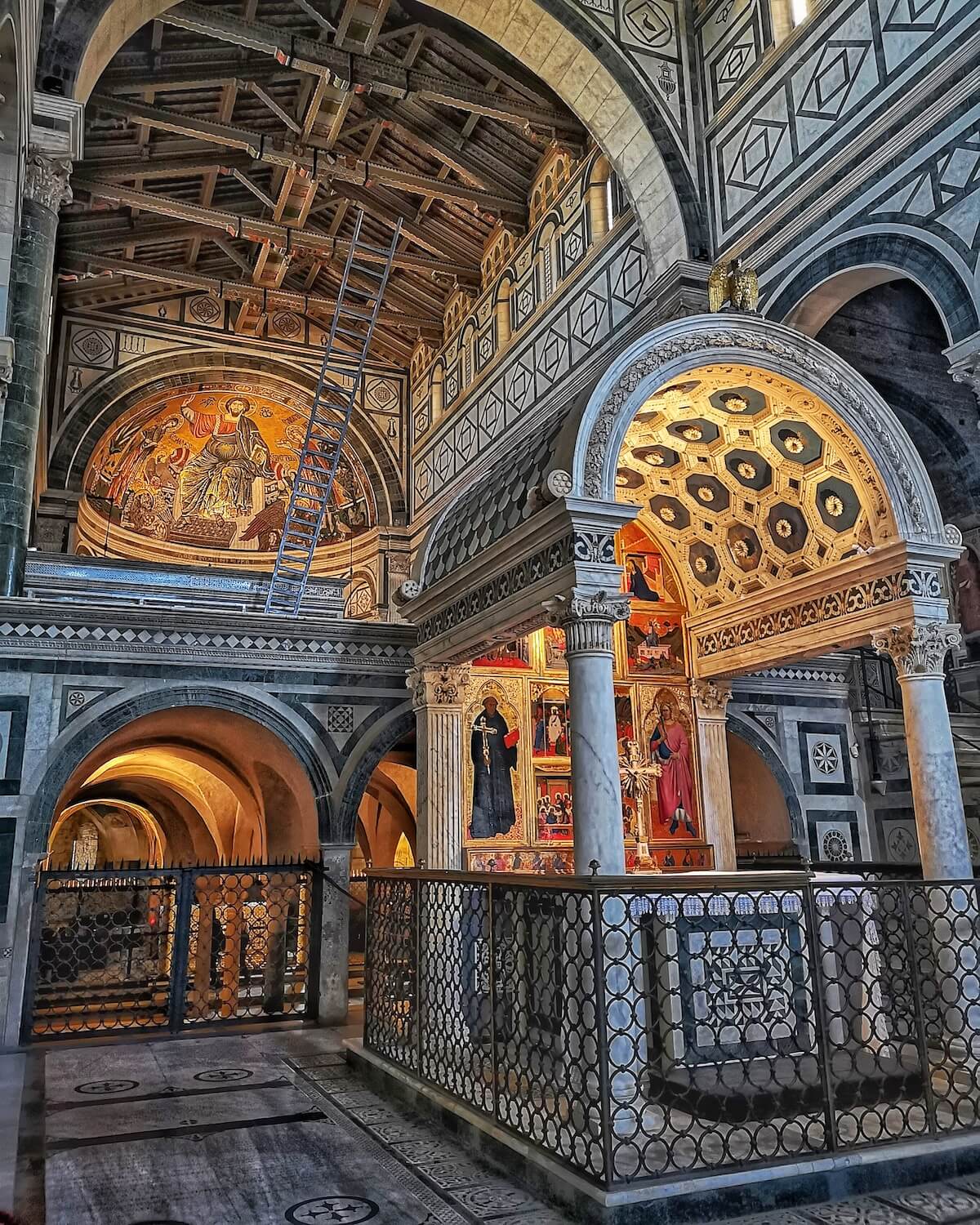
When in Florence you'll probably be making the hike up to Piazzale Michelangelo to drink in one of the most spectacular panoramas the city has to offer - but don't let your climb end there. Look behind you and you will see another flight of steps leading ever upward to the spectacular jewel-box of a church San Miniato al Monte.
According to legend the shadowy Miniato was Florence's first martyr, and the thousand-year-old Romanesque church built to house his earthly remains is one of our favourite spots in the entire city. An eerie crypt, a beautiful graveyard and jaw-dropping architecture combine to make San Minato one of our favourite spots in Florence - as an added bonus, it’s usually mercifully free of crowds.
Santo Spirito
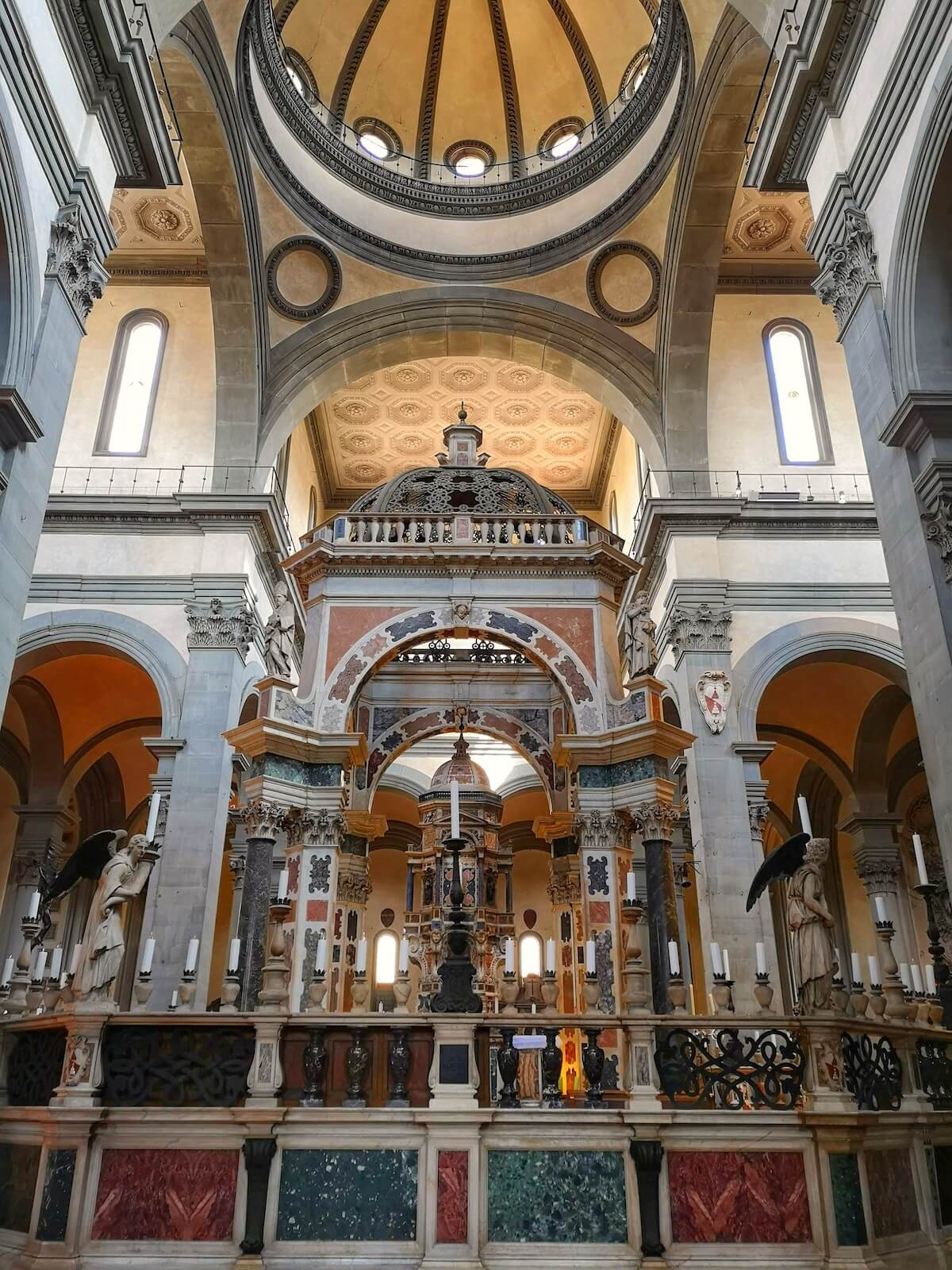
The austere facade and looming bulk of Filippo Brunelleschi’s Santo Spirito forms the dramatic backdrop to life in one of Florence’s most vibrant squares. Piazza di Santo Spirito is home to a lively market and ringed with bars serving up everything from morning cappuccini to evening aperitivi and late-night cocktails to a happening crowd of students and locals.
When you need a break from the buzz, stick your nose into the rather sombre basilica, whose minimalist design was to have a great impact on the future course of Renaissance architecture. No fewer than 38 chapels dot the interior, but make sure to visit the sacristy as well, where a wooden crucifix sculpted by a teenaged Michelangelo hangs above the door.
According to legend, the precocious sculptor gifted the artwork to the presiding Augustinian monks as thanks for being allowed to study corpses in the adjoining hospital at the dead of night - anatomical studies that would profoundly shape his future style.
Santa Trinita
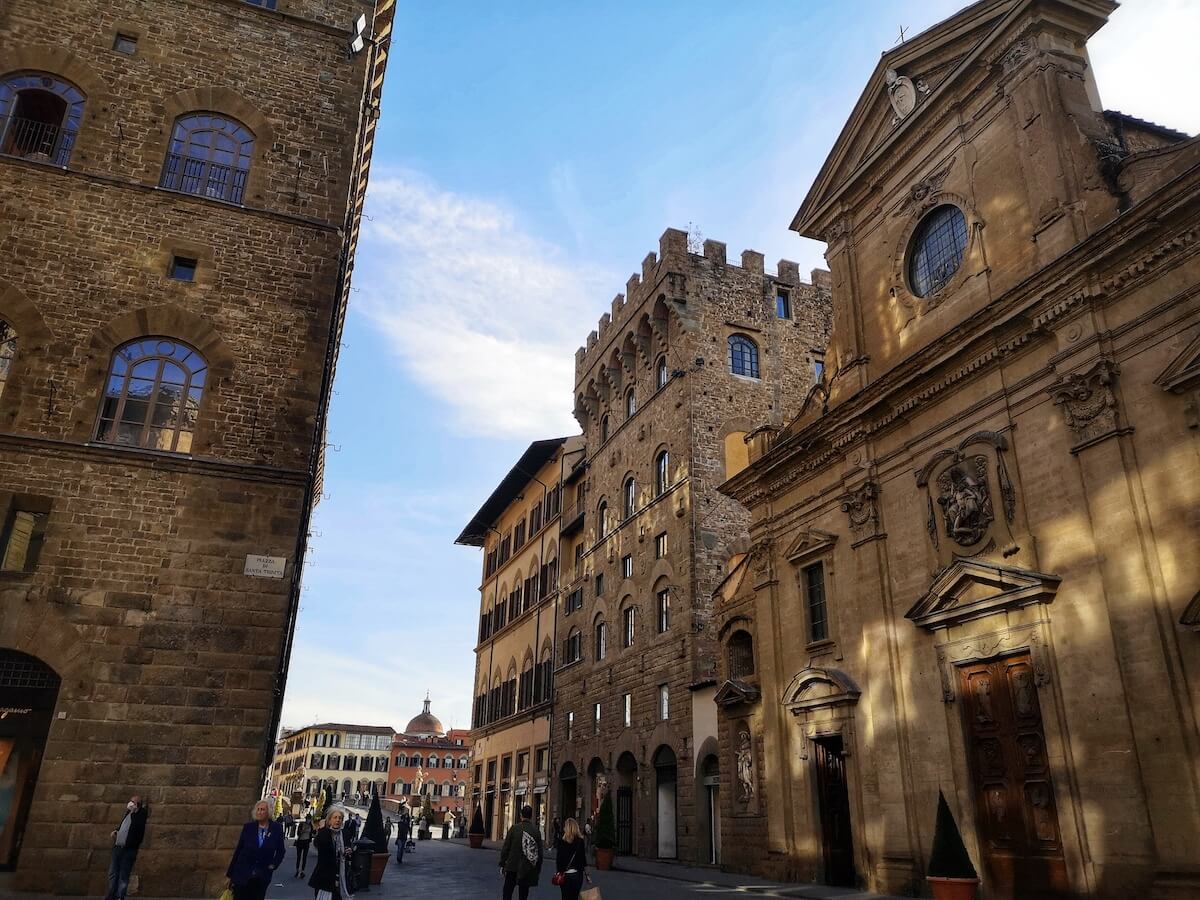
The 14th-century Basilica di Santa Trinità is a must-visit for art lovers. In the church’s Sassetti Chapel, just to the right of the high altar, Domenico Ghirlandaio’s lavish fresco cycle devoted to the life of Saint Francis of Assisi is one of the highlights of Renaissance painting.
The cycle was commissioned in 1483 by Francesco Sassetti, a well-to-do partner at the Medici bank and keen humanist scholar. Ghirlandaio’s preternatural skill is everywhere evident in the frescoes, which seem to spring off their walls in vibrantly true-to-life ensembles.
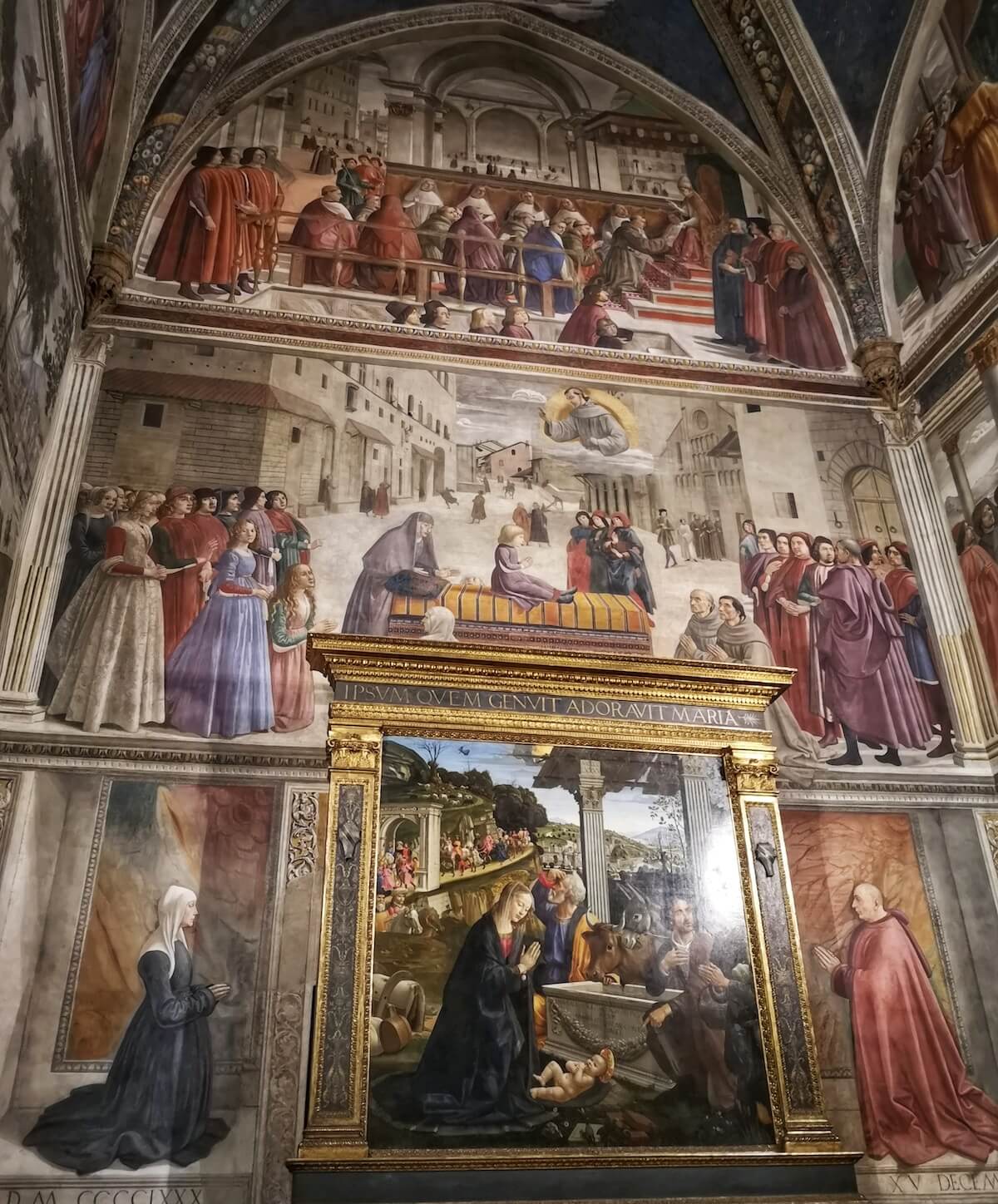
Perhaps the highlight of the cycle is the Resurrection of the Boy, ostensibly representing St. Francis reviving a child from death. The subtext of the scene is much more personal: the Sassetti had recently mourned the death of their son Teodoro and celebrated the birth of another, Teodoro II.
Contemporary family tragedy and joy coalesce in Ghirlandaio’s stunning sacred narrative: notably, the scene takes place outside the church of Santa Trinita, with Florence’s great and good witnessing the miracle - including members of the Medici court as well as Ghirlandaio himself.
Santa Maria Novella

With a collection of masterpieces that would put most art galleries in the world to shame, the yawning monastic complex of Santa Maria Novella is one of Florence’s most unmissable sites. Its beautiful green and white facade combines Romanesque and Gothic elements, and conceals a seemingly endless series of cloisters and chapels within.
Masaccio’s revolutionary Holy Trinity altarpiece stands in the left aisle, where real architecture and pictorial space merge in a barrel vault in which God the Father holds his crucified son for our veneration. In this, one of the first great Renaissance experiments in perspective, their space seems to be our own.
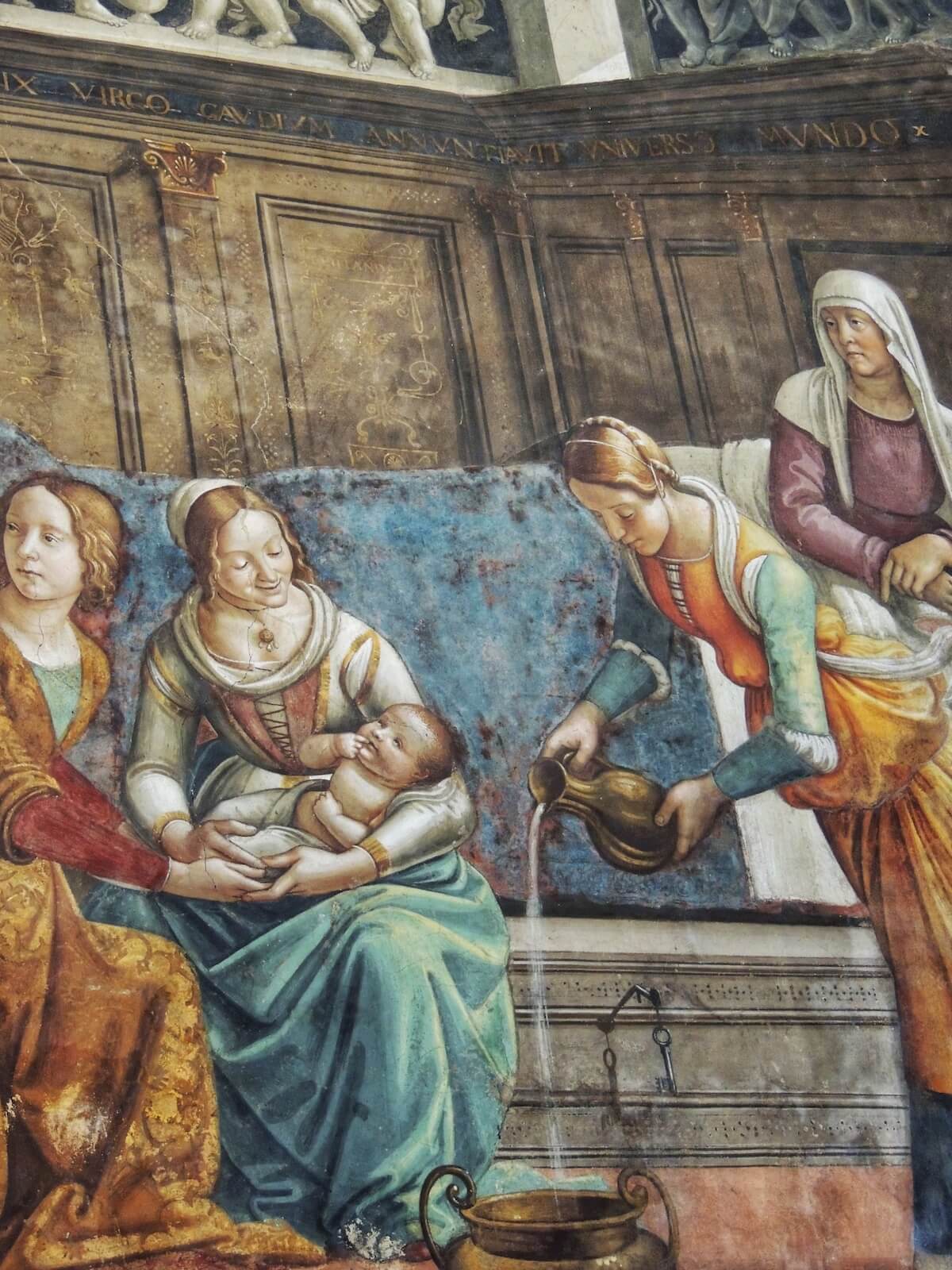
No less impressive are Domenico Ghirlandaio’s awe-inspiring frescoes depicting the life of the Virgin Mary in the Tornabuoni chapel, where vibrant Renaissance settings transport us straight back to the world of 15th-century Florence. Look out too for the magnificently restored frescoes by Paolo Uccello off the Chiostro Verde, in which scenes from the Life of Noah are portrayed in the artist’s strange and distinctive style.
Through Eternity’s team of expert art historians lead carefully crafted group tours of Florence as well as private Florence itineraries that help visitors get the most out of their time in the finest city of Renaissance Italy. If you’re planning a trip to Florence, then check out our range of offerings and let us help you craft your next adventure!

